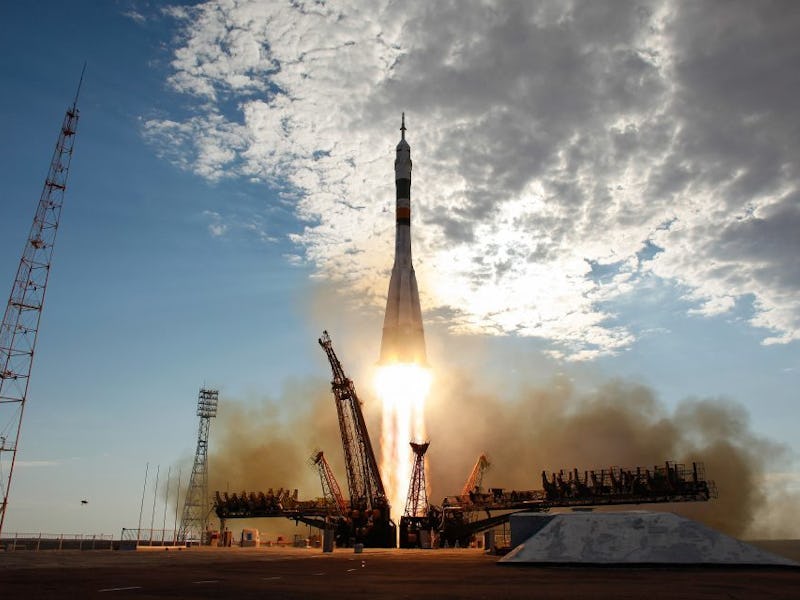Russian Launch Services Operator Eyes Lunar Mission in Early 2020s
Glavkosmos wants to hitch rides upon the powerful Soyuz rocket.

The Russian launching services company Glavkosmos has successfully blasted hundreds of satellites into Earth’s orbit. Now, the company has ambitions 250,000 miles farther out: The moon.
The company, the slogan of which is “Let’s go space!”, doesn’t plan to build its own rockets, but to hitch rides to the moon on Russia’s powerful Soyuz rockets. Russia intends to send crewed missions to the moon sometime in the 2020s, but it must first send robots there to scout the lunar terrain and sample the soil. When the Russian Space Agency, Rocosmos, sends its landers to the moon in the 2020s, Glavkosmos hopes to employ its expertise in packaging spacecraft and satellites to send along small spacecraft.
“Work is underway on evaluation of feasibility of implementing commercial missions in 2020-2022,” Glavkosmos told the Russian News Agency.
Unlike Roscosmos, which launches cosmonauts and astronauts to the International Space Station, Glavkosmos is responsible for Russia’s commercial space activities. The company sends satellites big and small into Earth’s orbit. Foreign companies, like China, also partner with the experienced rocket company to plan and execute their launches.
A Roscosmos Soyuz rocket prepares for launch in July.
Glavkosmos made headlines in July when it successfully packaged together, launched, and successfully deployed 73 Cubesats into Earth’s orbit. The mission was a true technical achievement. A rocket first dropped off a Russian Earth satellite mission into orbit. It then flew higher to release 24 more CubeSats, and then descended back towards Earth to release 48 Earth-imaging satellites for the U.S. satellite company Planet.
“For the first time in the world, such a complex and large mission has been developed and implemented,” said Glavcosmos in a statement.
Sending spacecraft to land on the moon will require similar technical acumen. Once in space, a lunar-bound mission, as envisioned by the space agency Rocosomos, will need to whip twice around Earth before thrusting toward the moon. After hurtling through space for over 100,000 miles, the spacecraft will need to turn and blast itself into the moon’s orbit. The craft will fire propellant and brake in preparation for a still harsh landing. The lander will hit the moon’s surface while traveling between 200 and 400 feet per second.
Russia plans to send its first research lander, Luna-Glob, to the moon in the early 2020s. Luna-Glob will be equipped with a soil sampling arm, to assess the ground for minerals and frozen water. It may also be fitted with a drill.
Glavkosmos landers may be joining in this endeavor to settle down upon the chalky, lunar soil.